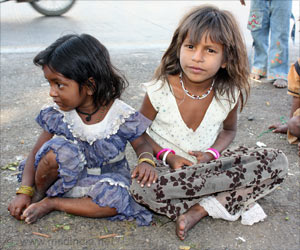Encephalitis has once again struck in the pockets of eastern Uttar Pradesh where the virus has already claimed the lives of 36 children.
With the onset of rains in large parts of north India, encephalitis has once again struck in the pockets of eastern Uttar Pradesh where the virus has already claimed the lives of 36 children, officials said.
Even as health authorities claim the currently spreading virus was not the deadly Japanese encephalitis, they do not rule out its possibility in the days to come."So far, we have not detected Japanese encephalitis in any of the 223 cases that have been reported since the outbreak of rains in and around this encephalitis prone area, but we cannot rule out the possibility of the lethal virus in days or weeks to come," said Gorakhpur Medical College principal O.P. Singh.
The institution has been made the nodal centre for treatment and control of Japanese encephalitis that engulfs at least half a dozen districts in the region almost every year since it was first detected way back in 1978.
"That year, the virus had claimed 721 lives, which shot up to 1,228 a decade later in 1998, only to get equally worse in 2005," Singh told IANS.
The disease is a perennial menace in several districts of the state, particularly along the Nepal border, where it had taken a toll of nearly 1,100 in 2005.
According to Singh, things were much better this year and the health authorities were better prepared than ever in the past.
Advertisement
He, however, hastened to add: "Considering that sanitation conditions continue to remain as bad as in the past, and the breeding grounds for the virus are thriving, it is too early to predict how bad it can get."
Advertisement
"Unless extensive preventive measures are in place, the virus will continue to strike again and again," said Dhole. According to him, the officially recorded death toll was far less than the actual toll.
"A large number of patients succumb to the virus and the cases never get reported. Even those brought to private hospitals in the cities are invariably not shown as encephalitis cases, specially if the disease proved fatal because the hospitals do not wish to expose their incompetence to contain the deadly virus."
He was of the view that nearly 50 percent cases go unreported, thereby reflecting the magnitude of the problem.
(Source: IANS)









